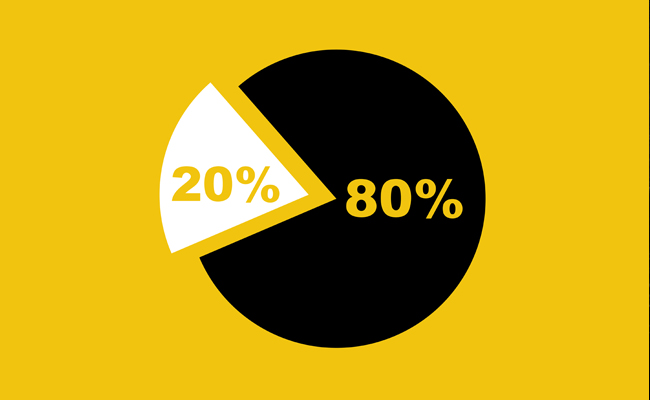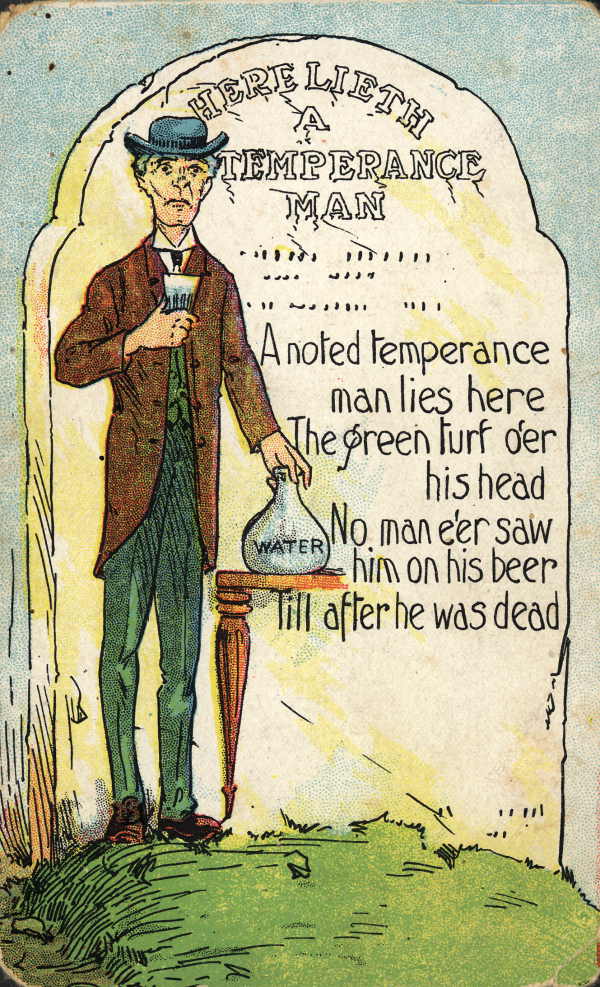
Update: This article is NOT a sponsored post. We received absolutely nothing from Evernote in exchange for this post and have never communicated with anyone at Evernote. Even though we put this disclaimer below as well, we thought we’d put it up here too because some folks missed it and claimed this recommendation was paid for. Again, we’re just users of the app ourselves who sincerely think others will find it useful as well. Scout’s honor.
We don’t talk a whole lot about the specific tools of modern productivity here at AoM. We’re generally more interested in principles, skills, mindsets, etc. Every once in awhile, though, we come across something so useful, we just have to share it.
Enter Evernote. It’s an app for your smartphone, tablet, computer, and even your Moleskine notebook. It’s just what the name implies: an application that serves as your notetaker, PDA, pocket notebook, to-do list, etc. The beauty of Evernote is that it syncs automatically across all your devices, and across all your operating systems. Never lose another post-it note, scrap piece of paper, or notebook that has important information on it. You’ll also streamline your desk from a jumble of notes and folders into a single digital storehouse.
The app is roughly organized into notebooks and notes. Just like in real life. You create a notebook for a particular subject/topic, then fill that notebook with notes. Besides syncing across devices and operating systems, there are some features that make Evernote really stand out:
- The ability to share notes and whole notebooks with classmates, coworkers, family, etc.
- The ability to take and attach pictures to a note right from within the app.
- The ability to take and attach voice memos and audio to a note right from within the app.
- The ability to attach files (spreadsheets, images, docs) to any note.
- The ability to scan text in a photo using Optical Character Recognition technology.
- The ability to set reminders for yourself for various tasks, goals, and projects from within the app.
- The ability to create checkboxes that serve as virtual to-dos.
- The ability to sync automatically between all devices, meaning you can access your notes even when offline. (This feature is somewhat limited in the free version.)
- Best of all – it’s FREE! There’s a premium version that offers a few bonus features, but the freebie offers all of the above.
Evernote has been around for nearly five years now, and although the AoM team has dabbled with the app before, Brett and I have finally become full-blown evangelists for it. Before we get too far in, we should say upfront that this is not a sponsored post; we have no affiliation with Evernote whatsoever. We just really love the app and we think that every man could benefit from using it.
Utilizing even just a few of the ideas below will make you a more productive man. And please, add your own ideas of how to use Evernote in the comments!
1. Track your time. One of the most effective productivity systems out there is the relatively simple (but not necessarily easy) task of recording how you spend your time. Checking email, working on the spreadsheet, attending your sales meeting, even the 15 minutes you wasted on Facebook. At the end of the day, you’ll often realize just how much time you wasted. There are computer programs that will track time for you, but in our experience they just aren’t effective in tracking it specifically enough to mean anything. Use Evernote to track your productivity by stopping and making a note of what you’ve just been doing every 15 or 30 minutes. It may seem like a lot of work, but after a week, you’ll have a clear understanding of how you spend your time.
2. Write a note to your significant other. Many a husband and wife like to trade instant messages, texts, or emails with each other while they’re apart. Using Evernote is another option for sending your missives. Create a shared note between you, and send notes back and forth throughout the day. It’s less interrupting than a text, and more private than an email (especially if it’s a work email address).
3. Journaling. Did you participate in our our 31-day challenge and decide that you wanted to continue this journaling habit? If so, maybe Evernote could be a good digital option for making your entries. Create a notebook for your journaling, and a new note for each day (or entry). You can even create a template (here’s the one Michael Hyatt uses) so that you can use the same daily prompt and not have to come up with new journaling ideas every day.
4. Book notes. Use Evernote to take down your favorite quotes and jot down comments and questions while doing your reading. Create a notebook for your book notes, and use tagging to categorize between fiction, non-fiction, business, classics, hobbies, etc.
We’ve also come across a brilliant little trick for saving and cataloging any highlights you make through the Amazon Kindle devices or apps. When logged in on kindle.amazon.com, you can click “Your Highlights” at the top of the page and view any highlighted passage you’ve made in any book you’ve read on any Kindle device or app. You can click a specific book title, view all the highlights and notes you made in that book, and either copy/paste them into Evernote, or even use the web clipper and do it automatically. This feature is especially handy for doing research for college papers or work projects, and even allows you to use lengthy quotes without the hassle of transcribing. You can thank us later.
5. Collaborate at work. This is how we use Evernote here at AoM. Since our team is based in two locations very far away from each other (Denver and Tulsa), we don’t have a physical whiteboard we can all see each day. That’s where Evernote comes in. We use shared notebooks primarily for blog ideas and research, but the possibilities are endless.
6. Gift ideas. If you’re like me, you’ll come up with a brilliant gift idea for a loved one, jot it down on a sticky note, and promptly lose said note less than a week later. Create a notebook, with a new note for each person in your family. Share notes for your kids with your wife, for your wife with your kids, etc. Bounce ideas off each other, and never lose a good gift idea again. As a bonus, create a list for yourself of stuff you’d like, share it with your family, and they’ll never run out of ideas for you.
7. Grocery list. Our household goes through endless scraps of paper for meal planning and grocery lists. They end up lost more often than not. Create your weekly list in Evernote, share it with your wife or roommates, and everyone will be on the same page. You can each add items to the list as you think of them instead of risking forgetting and needing to make a return trip to the market.
8. Save articles and other interesting things for later. Use the Evernote web clipper to save all the articles and fun links you want to read later, but can’t go through during the day. So you saw the latest article on AoM while at work, but don’t have the time to read it immediately? Hit a single button and save it to Evernote; you can enjoy it on your bus ride home, even when you don’t have an internet connection.
9. Keep your clothing sizes and measurements handy. I know many a man who can’t remember their clothing sizes, especially when it comes to dress clothes that have specific numbers. Get yourself properly measured, and keep the numbers in Evernote. When you’re shopping, you’ll know exactly what you need. When you find that certain brands fit your body differently, you can note that as well.
10. Track goals. Make a notebook for your annual goals. Within that notebook, create a note for each goal, and use that note to create action items, next steps, and progress reports. Check it out every week (or even every day) and make sure you stay on track.
11. Digital rolodex. Take pictures of all the business cards you acquire. Evernote’s OCR (optical character recognition) will read the text of the cards, meaning you can search for names and titles when you’ve inevitably forgotten things.
12. Track finances. While other apps (like Mint or your banking app) will keep better track of the minutiae of your daily finances, you can use Evernote to take pictures of work receipts or large expenses, tag them appropriately, and not have to save shoeboxes of receipts anymore.
13. Master meal list and journal. This is a fairly creative idea, if I don’t say so myself. When my wife and I are trying to meal plan (we plan a week at a time), we often have a hard time even remembering what’s in our wheelhouse and what we like. What we need is a master list of meals we’ve made and enjoyed. Can you see where this is going? Create a master meals list in Evernote, take notes on what part of the meal went well and what didn’t, and never be stuck asking, “What should we have for dinner?” again.
14. Fitness/weight journal. Diet and exercise remain the number one New Year’s resolution year after year. And for good reason; our fair country needs a healthy dose of getting our butts off of the couch. Unfortunately, most people give up on their resolutions between 45 and 60 days from January 1. To help motivate you, keep a daily note of your weight, what you ate, and any exercise. There are numerous benefits, especially to keeping an eating journal; the first of which being that in studies on the subject, people who keep a journal lose nearly twice as much weight. And it’s free.
15. Write a book. Looking to bone up your wordsmithery by writing a book? Use Evernote! Every writer knows how the best inspiration often strikes at the most inconvenient times: in bed, on the train, while out on a run, etc. Instead of trying to remember these flashes of inspiration until you can conveniently write them down, do it instantly! While a pocket notebook can do the trick, you risk losing your notes. Also, with Evernote, you have your notes wherever you go no matter what — a definite bonus.
16. Send yourself voice memos. If you’re in the car or on a brisk walk and can’t type in a note, use Evernote’s voice note feature to record yourself a memo. You can then email it to yourself and rest assured that you won’t forget to buy flowers for your anniversary.
17. Record interviews or other important meetings. For AoM, we do quite a few interviews for articles. When they end up being phone interviews, we want a way to record them so we can go back later and transcribe and pick out the highlights. Instead of paying for an app on your phone or computer, just use Evernote’s recording tool. It works surprisingly well, and when you record on your phone (just make sure it’s on speakerphone if you’re recording a phone call), you can just open up the computer and have it waiting for you when it’s time to transcribe. If you use an Android device, Evernote can even transcribe the audio for you (this also means the feature is likely soon coming to other platforms as well).
18. Master to-do list. Instead of keeping piles of sticky notes everywhere, why not keep your to-do list all in one place? You can even create a to-do notebook, with different notes for your different roles: employee, husband, hobbyist, father, etc. Use the checkbox feature to make it even more user friendly.
19. Distraction to-do list. Related to the above, but this version of the to-do list is intended to keep you from browsing the infinite depths of the web and instead keep you focused on your work. In our post about attention exercises, we mentioned how it takes, on average, 25 minutes to get back to work after you’ve been distracted online. Keep that from happening by using Evernote as your distraction to-do list. We all know how this goes — we’re working away when all of a sudden something pops into our head (“What was that company I saw on Shark Tank last night?”) and we immediately look it up, and then we’re lost in the rabbit hole of the world wide web. When you feel the urge to pop open a new tab to look something up, instead of doing it right away, file it in Evernote, and come back to it during one of your regularly scheduled breaks (you are using the Pomodoro Technique, aren’t you)?
20. Honey-do list. In this to-do list spirit, if you’re bold, create and share a honey-do list with your wife. She can add little things around the house she’d like you to get to, and you don’t have to worry anymore about being reprimanded because you forgot to fix the toilet. If you don’t enjoy the honey-do list (personally, I don’t mind tinkering around the house on weekends), we can keep this tip just between you and I.
21. Keep your insurance policy info and phone numbers handy. When an errant driver ran through our front yard fence a few months back, I had to scramble around the house and dig online to find our policy information and rep’s phone number. I learned my lesson, and immediately made a note in Evernote for that info. With just a policy number and phone number, you’re not storing anything too private.
22. Vacation itinerary and info. The Kayak app does a good job of this, but why not just use Evernote so all your info is in a single place? Also, Kayak just stores your reservations automatically — you can’t make notes or add comments about things like excursion or restaurant recommendations you got from a friend. Keep hotel reservations, flights numbers, car rental confirmations, etc. in a note. Also make a note for restaurants, event ideas, attractions, and other things you plan on doing with your family.
23. Bucket list. Similar to your goals notebook, but this is more of a life dreams list. Instead of checking this note every week or every day, check it every few months, or even just once a year and see how you’re coming along on any bigger things that you’d like to do or accomplish someday.
24. Class/meeting notes. In college, it seemed like everyone I knew (myself included) had experienced the dreaded hard drive fail, only to lose precious notes and papers. Protect yourself against that by using Evernote to keep your notes, and even write first drafts of a paper, so if lost, you have at least something to show for it. It’s also easily shareable for fellow classmates or coworkers if they missed a class/meeting.
25. Pocket notebook. While I still love my paper pocket notebook, I also keep a note in Evernote just titled “Notes.” This is sort of a dumping ground for anything that pops into my head when I don’t have my paper version on me. Always accessible, always synced across devices . . . it’s just too easy.
26. Resource organization. If you’re working on a big project, you likely have multiple different resources coming at you: papers, links, spreadsheets, meeting notes, etc. Organize it easily by keeping all this stuff in an Evernote notebook. It’s extra handy because you can share this notebook with the other folks on the team and all be on the same page at all times.
27. Remind yourself of the things you want to do. This seems a little silly at the outset; why do you need to remind yourself to do something you want to do? Well, it’s mainly because us humans are forgetful and a little lazy. Use the reminders feature to send yourself a wake-up call every morning with a nice message like, “Get off your butt and GO FOR A RUN!” or, “Sleeping in is for the weak, go work on your novel!” Pick a couple things that are most important to you, and use Evernote to help keep them a priority.
28. Record DIY projects you’d like to do. Have a DIY/Projects notebook, and take pictures of the cool things you see that you want to do. When you see a restored axe at an antique store, snap a pic, and you’ll remember to look up how to restore an axe on AoM. Or if you see something online you’d like to do, like build a shoe shine box, use the Evernote web clipper to save it for later and you’ll be full of inspiration for years to come.
29. Learn your family’s history. Evernote can become your handy genealogy notebook. You can scan in old family photos, birth/death certificates, immigration records, and even family tree charts and PDFs. You can record audio of interviews you conduct with grandparents, or even long-lost relatives over the phone. When you come across new tidbits of family info, record it all into Evernote instead of that cumbersome notebook you tote around with you.
30. Commonplace book. This is perhaps the most handy benefit of using Evernote. The commonplace book, while no longer terribly common, was something that was incredibly popular in the 17th through early 20th centuries. It was basically a physical book where you recorded all the information you didn’t want to forget. Recipes, poems, quotes you liked, pieces of literature that spoke to you, things you learned at college, quips handed down from grandpa and dad…anything that you were interested in could go in your commonplace book for later reference. While the information age has largely done away with the practice, there’s still a benefit to keeping this type of “book.” Use Evernote as your modern commonplace book. Use tags, and make your book even more searchable, so you don’t have to flip through digital pages and pages of info.






